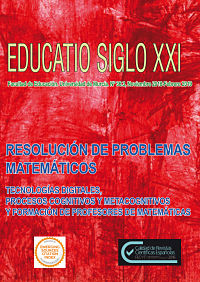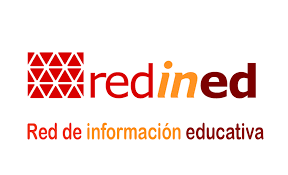Secondary education students’ beliefs about the nature of science and scientific models: a cross- sectional study
Abstract
This exploratory study examines the beliefs of secondary school students at different academic levels regarding the construction and nature of scientific knowledge and scientific models. To this end, a questionnaire was administered to 151 secondary school students in grades 8-12 (ages 12-18). Items included in the questionnaire relate both to nature, elaboration and validation of scientific knowledge and to nature, role, formulation and validation of scientific models. Based on the scores obtained by students and the analyses of variance undertaken, it can be concluded that: a) students' knowledge about the nature of science and scientific models is not epistemologically appropriate and does not improve the higher academic level is; b) students' ideas about scientific models are significantly better than ideas about the construction of scientific knowledge, regardless of academic level; and c) students tend to overvalue the role of observation and experimentation in the processes of scientific knowledge construction.
Downloads
-
Abstract714
-
PDF (Español (España))612
References
Acevedo, J. A., Manassero, M. A. y Vázquez, À. (2002). Nuevos retos educativos: Hacia una orientación CTS de la alfabetización científica y tecnológica. Pensamiento Educativo, 30, 15-34.
Barrios, M. y Cosculluela, A. (2013). Fiabilitat. En J. Meneses (Ed.), Psicometria (pp. 5-58). Barcelona: UOC.
Bell, R. L., Blair, L. M., Crawford, B. A. y Lederman, N. G. (2003). Just do it? Impact of a science apprenticeship program on high school students' understandings of the nature of science and scientific inquiry. Journal of Research in Science Teaching, 40(5), 487-509. DOI: 10.1002/tea.10086.
Blachowicz, J. (2009). How science textbooks treat scientific method: A philosopher's perspective. The British Journal for the Philosophy of Science, 60(2), 303–344.
Carey, S. y Smith, C. (1993). On understanding the nature of scientific knowledge. Educational Psychologist, 28(3), 235-251. DOI: 10.1207/s15326985ep2803_4
Dogan, N. y Abd-El-Khalick, F. (2008). Turkish grade 10 students' and science teachers' conceptions of nature of science: A national study. Journal of Research in Science Teaching, 45(10), 1083-1112. DOI: 10.1002/tea.20243.
Fernández, I., Cachapuz, A., Carrascosa, J., GIL, D. y PRAIA, J. (2002). Visiones deformadas de la ciencia transmitidas por la enseñanza. Enseñanza de las Ciencias, 20(3), 477-488.
Grosslight, L., Unger, C., Jay, E. y Smith, C. L. (1991). Understanding models and their use in science: Conceptions of middle and high school students and experts. Journal of Research in Science teaching, 28(9), 799-822. DOI: 10.1002/tea.3660280907.
Holbrook, J. y Rannikmae, M. (2007). The nature of science education for enhancing scientific literacy. International Journal of Science Education, 29(11), 1347-1362. DOI: 10.1080/09500690601007549.
Kang, S., Scharmann, L. C. y Noh, T. (2005). Examining students' views on the nature of science: Results from Korean 6th, 8th, and 10th graders. Science Education, 89(2), 314-334. DOI: 10.1002/sce.20053
Khishfe, R. (2008). The development of seventh graders' views of nature of science. Journal of Research in Science Teaching, 45(4), 470-496. DOI: 10.1002/tea.20230.
Lederman, N. G. (1992). Students' and teachers' conceptions of the nature of science: A review of the research. Journal of Research in Science Teaching, 29(4), 331-359. DOI: 10.1002/tea.3660290404.
Organisation For Economic Co-Operation And Development (OECD) (2006). Assessing Scientific, Reading and Mathematical Literacy: A Framework for PISA 2006. Disponible en http://www.oecd-ilibrary.org/education/books/pre-2007, consultado el 20 de marzo de 2016.
Osborne, J., Collins, S., Ratcliffe, M., Millar, R. y Duschl, R. (2003). What “ideas‐about‐science” should be taught in school science? A Delphi study of the expert community. Journal of Research in Science Teaching, 40(7), 692-720. DOI: 10.1002/tea.10105
Perking-Gough, D. (2007). Understanding the Scientific Enterprise: A Conversation with Alan Leshner. Educational Leadership, 64(4), 8-15.
Raviolo A., Ramírez, P., López, E. y Aguilar, A. (2010) Concepciones sobre el conocimiento y los modelos científicos: un estudio preliminar. Formación Universitaria, 3(5), 29-36.
Sandoval, W. A. (2005). Understanding students' practical epistemologies and their influence on learning through inquiry. Science Education, 89(4), 634-656. DOI: 10.1002/sce.20065
Sandoval, W. A. y Morrison, K. (2003). High school students' ideas about theories and theory change after a biological inquiry unit. Journal of Research in Science Teaching, 40(4), 369-392. DOI: 10.1002/tea.10081
Schwarz, C. V., Reiser, B. J., Davis, E. A., Kenyon, L., Achér, A., Fortus, D., y Krajcik, J. (2009). Developing a learning progression for scientific modeling: Making scientific modeling accessible and meaningful for learners. Journal of Research in Science Teaching, 46(6), 632-654. DOI: 10.1002/tea.20311
Schwarz, C. V. y White, B. Y. (2005). Metamodeling knowledge: Developing students' understanding of scientific modeling. Cognition and Instruction, 23(2), 165-205. DOI: 10.1207/s1532690xci2302_1
Smith, C. L., Maclin, D., Houghton, C. y Hennessey, M. G. (2000). Sixth-grade students' epistemologies of science: The impact of school science experiences on epistemological development. Cognition and Instruction, 18(3), 349-422. DOI: 10.1207/S1532690XCI1803_3
Solaz-Portolés, J. J. (2010). La naturaleza de la ciencia y los libros de texto de ciencias: una revisión. Educación XX1, 13(1), 65-80. DOI: 10.5944/educxx1.13.1.277
Solaz-Portolés, J. J. (2012). Sobre cómo el conocimiento cientıfico intenta aproximarse a la realidad. Revista Brasileira de Ensino de Física, 34(1), 1308.
Solaz-Portolés, J. J., Sanjosé, V. y Civera, E. (2012). ¿Es adecuada la presentación de los modelos atómicos desde el punto de vista histórico y epistemológico en los textos educativos de Bachillerato? Química Viva, 11(3), 229-239. Disponible en http://www.quimicaviva.qb.fcen.uba.ar/v11n3/solaz.pdf, consultado el 23 de abril de 2016.
Treagust, D. F., Chittleborough, G. y Mamiala, T. L. (2002). Students' understanding of the role of scientific models in learning science. International Journal of Science Education, 24(4), 357-368. DOI: 10.1080/09500690110066485
Vasques, R., Solano, I., Veit, E. A. y Lang da Silveira, F. (2011). Validación de un cuestionario para investigar concepciones de profesores sobre ciencia y modelado científico en el contexto de la física. Revista Electrónica de Investigación en Educación en Ciencias, 6(1), 43-60.
Vázquez–Alonso, Á., García–Carmona, A., Manassero–Mas, M. A. y Bennàssar-Roig, A. (2014). Spanish students’ conceptions about NOS and STS issues: A diagnostic study. Eurasia Journal of Mathematics, Science & Technology Education, 10(1), 33-45. DOI: 10.12973/eurasia.2014.1013a
Vázquez, Á. y Manassero, M. A. (1999a). Ideas de los estudiantes sobre la epistemología de la ciencia: modelos, leyes y teorías. Revista de Educación, 320, 309-334.
Vázquez, Á. y Manassero, M. A. (1999b). Características del conocimiento científico: creeencias de los estudiantes. Enseñanza de las Ciencias, 17(3), 377-395.
Vázquez-Alonso, Á. y Manassero-Mas, M. A. (2017). Juegos para enseñar la naturaleza del conocimiento científico y tecnológico. Educar, 53(1), 149-170. DOI: 10.5565/rev/educar.839
Windschitl, M., Thompson, J. y Braaten, M. (2008). Beyond the scientific method: Model‐based inquiry as a new paradigm of preference for school science investigations. Science Education, 92(5), 941-967. DOI: 10.1002/sce.20259.
Yacoubian, H. A. y Boujaoude, S. (2010). The effect of reflective discussions following inquiry‐based laboratory activities on students' views of nature of science. Journal of Research in Science Teaching, 47(10), 1229-1252. DOI: 10.1002/tea.20380
Original work publishes in this journal is subject to the following terms:
1. Murcia University Press (the publishing house) holds the copyright of the publishes work, and favours and allows their reutilization under the use license stated in point 2.
© Servicio de Publicaciones, Universidad de Murcia, 2015
2. Work is published in the electronic edition under a license (Creative Commons Reconocimiento-NoComercial-SinObraDerivada 4.0 España (legal text). They can be copied, used, disseminated, transmitted and publicly presented, as long as: i) authorship and original publication source is acknowledged (journal, publishing house and URL of the work); ii) are not used for commercial purposes; iii) the existence and specifications of this use license is stated.
3. Conditions for self-archive. Authors are allowed and encouraged to disseminate electronically the pre-pint (before review) and/or post-print (accepted for publication) versions of their work before their publication since that favours earlier circulation and dissemination resulting in an increased chance for the authors to be cited and for the work to reach a bigger share of the academic community. Colour: RoMEO: green.








